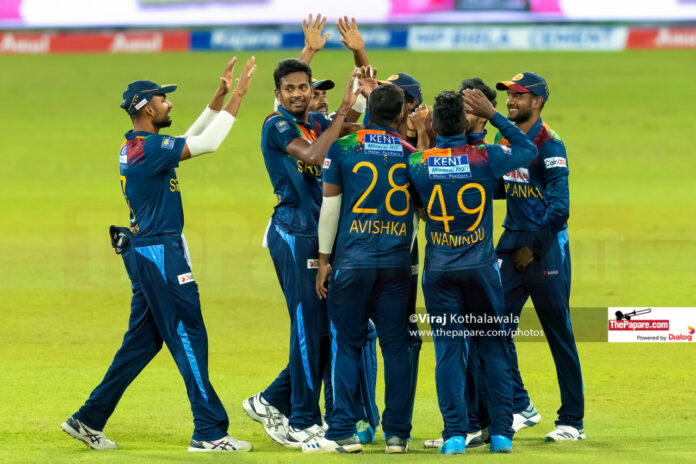The ICC announced a number of changes to the Playing Conditions that came into effect on October 1, and some could become talking points at the upcoming ICC Men’s T20 World Cup 2022.
In a format of small margins, these changes may become match-defining and deciding moments in Australia.
- MAS unveils official ICC Men’s T-20 World Cup cricket jersey for team Sri Lanka
- WATCH – Our players are ready to showcase their talents on big stage against big teams
Here’s five of the recent changes that you will want to keep an eye out for over the course of the event.
Running out of the non-striker
While the form of dismissal has always been in place, its relevant section in the laws of the game has moved from the ‘Unfair Play’ section to the ‘Run out’ section. Whether it be a case of a non-striker backing up too far, or simply being out of their ground, the adjudication of the dismissal is effectively the same as a stumping would be at the other end.
The debate around Deepti Sharma’s run out of Charlie Dean during India’s tour of England last month has thrown the spotlight on the law, with a number of England men’s players declaring they won’t attempt the dismissal. To the letter of the law, England in this instance would be effectively conferring a competitive advantage on the opposition.
Will we see more executions of this mode of dismissal at the T20 World Cup?
The in-match over penalty
The failure of a fielding team to bowl their overs by the scheduled cessation time leads to an additional fielder having to be brought inside the fielding circle for the remaining overs of the innings
While this change came earlier in the year, teams are still adjusting to the recent changes. We have seen bowling teams being forced to field an additional player inside the ring in the death overs with the over rate not being maintained.
With the extra fielder inside the ring being crucial for the batting team, matches may well be dictated by this change.
This was recently witnessed in the Asia Cup 2022 opener between India and Pakistan. India won the match by five wickets with Pakistan forced to keep an extra fielder inside the circle towards the end of the run chase due to a slow over rate.
In a game of fine margins, this could make all the difference, and looks an appropriate deterrent to not bowling overs in a timely manner.
Batters returning when caught
When a batter is out caught, the new batter will come in at the end of the striker, regardless of whether the batters crossed prior to the catch being taken.
Previously, in case the batters crossed before a catch was taken, the non-striker would take strike the next ball while the new batter would be at the non-striker’s end.
This may force a re-think of tactics, particularly at the death with a lower-order batter joining a set top-order player at the other end. While a catch dismissing the lower-order player in the past may have brought the set player back striker’s end for the next delivery in times gone past, the new batter will now always be the player on strike.
Unfair movement by the fielding side
While the official position on illegal movement from the fielders has not changed, there are adjustments for the penalty for players found to breach the law.
Any movement deemed unfair and deliberate by fielders while a bowler is running in to bowl now results in the umpire awarding five penalty runs to the batting side, in addition to the delivery being a dead ball.
There are exceptions to this law, with minor adjustments and movement by the fielder towards the striker deemed legal. It is also worth noting that it is within the laws for a fielder to move in reaction to a shot a batter is playing mid-delivery.
As an example of this would be Steve Smith’s close catch against Pakistan in an ODI back in 2014. Smith noticed Pakistan batter Fawad Alam shaping up for a sweep shot off a spin bowler, though moved across to leg slip from behind the wicketkeeper and completed a catch.
The striker’s right to play the ball
Batters will now be required to have some part of their bat or person remain within the pitch. Should they venture beyond that, the umpire will call and signal a dead ball, and any ball which would force the batter to leave the pitch will also be called no-ball.
While it will be rare for this to happen at the T20 World Cup, there are hypothetical situations where this comes into play. For example, an attempted variation and change-ups from a bowler trying everything in their power to stop a world-class batter potentially could go awry, leading to a batter attempting to walk off the pitch to play the ball.
If this were to play out, a dead ball will be called, with a no-ball signal from the umpire, leading to a free hit on the next delivery.























